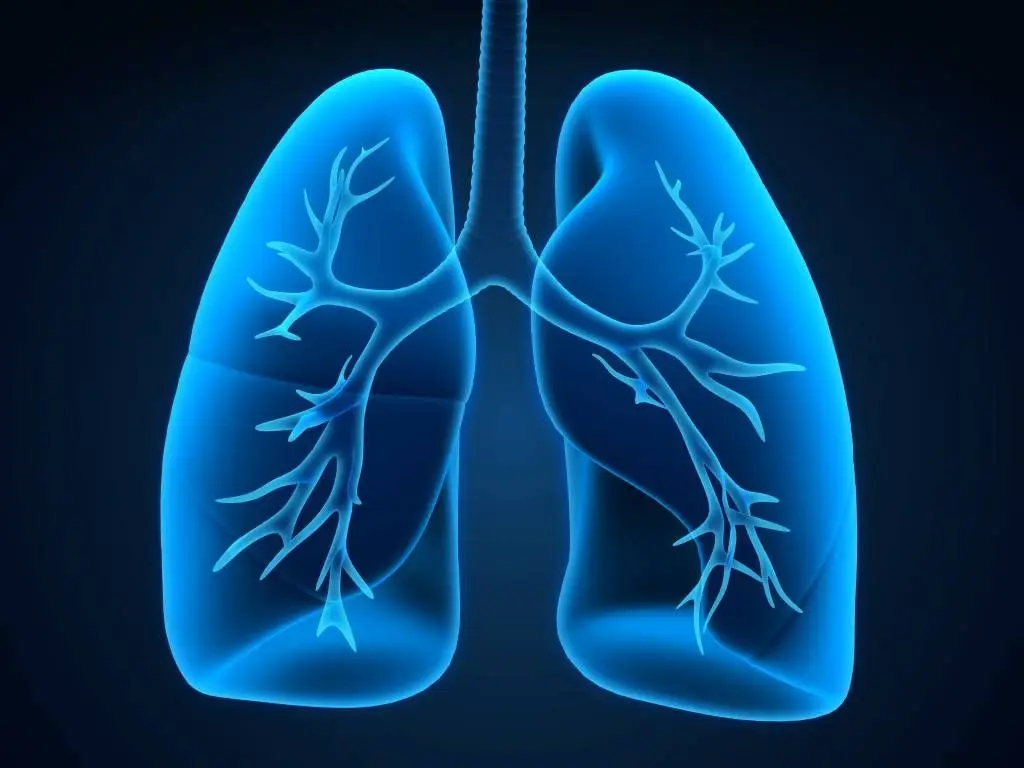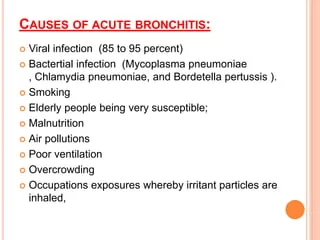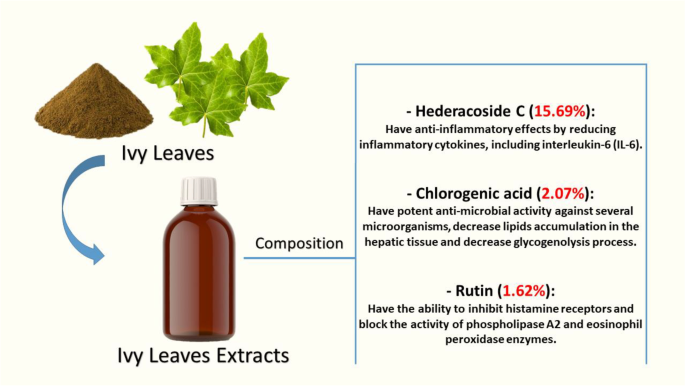
Acute respiratory tract infections (ARTI) account for the most common outpatient visits in the United States each year, averaging 68 million visits per annum.1 70% of prescriptions for ARTI often include the use of antibiotics, which is effective in less than 50% of patients consuming said drug.1(183)
Thus, ARTI demands more effective interventions to help mitigate symptoms of the same, which could include the use of ivy leaf. As such, the following will explore ivy leaf in greater detail, as well as its effects upon acute bronchitis; a common form of ARTI.

One of the most prevalent forms of ARTI is acute bronchitis, characterized by inflammation of the airway, shortness of breath, sputum production, and wheezing in the absence of pneumonia.2 Acute bronchitis is mainly driven by viral infections, and most often emerges during the fall and winter months.2(1) Said condition also has economic and personal impacts as it is the most common reason for lowered quality of life and an individual’s incapacity to work, respectively.2(1)
Generally, coughing that is related to acute bronchitis persists between 10-20 days and is often managed via the use of antitussives (reduces the urge to cough).2(2)3 Interestingly, ivy leaf, also known as Hedera helix, have been marketed worldwide for managing the same. As a means of appreciating said botanical, the following will consider research by Kruttschnitt et al2(2) which explored the utility of Hedera helix in the management of acute bronchitis.
Kruttschnitt et al2(2) recruited 139 participants exploring the efficaciousness of Hedera helix in the management of acute bronchitis symptoms. The criteria for inclusion into the study required all eligible participants signed in an informed consent, a cough for at least 3 days, diagnosed acute bronchitis, and 6 years of age or older.2(2) Participants were excluded if they were in another trial, taking medications within 2 weeks of the study, or had a hypersensitivity to Hedera helix.2(2)
Study medications used included Prospanex Cough Syrup, which contained 35 mg of Hedera helix extract per 5 ml. Commonly recommended doses was 5 ml x 3 times/day (6 years or older), and 7.5 ml x 3 times/day (adults).2(2) A commonly used medication, known as ACC mono acetylcysteine (helps reduce mucus thickness), was also used for comparison of effectiveness.2(2) 25 physicians were also recruited to administer either ACC mono acetylcysteine or Prospanex; physicians were free to choose either intervention, however, the decision for each was made before the patient was included in the study.

Baseline measures for each participant included the Bronchitis Severity Score which had a 5-stage assessment: dyspnea during coughing, rales/rhonchi, sputum, and coughing fits.2(2) Furthermore, the severity of bronchitis was rated using the 7-stage score and coughing quality by a 3-stage score, and during treatments, participants were also asked to track general well-being, frequency of waking from sleep per night, cough-related sleep disturbances, dyspnea during coughing, chest pain while coughing, coughing intensity, and number of daytime coughing fits.2(2)
The average age for the Prospanex group was 44.3 years and 49.1 years for the ACC mono acetylcysteine group while the average weight for the Prospanex group was 66.1 kg and 71.7 kg for the ACC mono acetylcysteine group.2(3) Following baseline data, the physician prescribed either Prospanex or ACC mono acetylcysteine over a 7-day period for each participant.

After 7-days of ACC mono acetylcysteine/Prospanex, the study indicated that there were significant improvements amongst patients using Hedera helix and was exemplified by reductions in dyspnea, rales, sputum, and coughing fits.2(5)Other improvements included reductions in cough-related sleep disturbances, dyspnea during coughing, chest pain during coughing, and coughing intensity; such changes were suggested to have come from the known expectorant and antispasmodic actions of ivy.2(5)
Although ACC mono acetylcysteine was effective in reducing said symptoms, there were no statistically significant differences when compared to Prospanex, suggesting that the latter was as effective to its synthetic counterpart.2(6) Although the study results appear promising, limitations included an unequal distribution of participants in both groups; by the end of the study, only 29 participants remained in the ACC mono acetylcysteine group while the other participants were in the Prospanex.2(5) Such could be better addressed by future studies implementing a randomized study design.2(5)
In conclusion, ARTI accounts for the most common outpatient visits in the United States each year, averaging 68 million visits per annum. 70% of prescriptions for ARTI often include the use of antibiotics, which is effective in less than 50% of patients consuming said drug. Evidence suggests that ACC mono acetylcysteine is effective in treating acute bronchitis. However, ivy leaf extracts have also been shown to provide comparable outcomes to that of said medication, thereby offering individuals a natural and relatively safe alternative to conventional approaches.
References
1. Li D, Conson M, Kim N, et al. Patient characteristics and outcomes associated with outpatient antibiotic overuse in acute adult bronchitis. Proc (Bayl Univ Med Cent). 2020;33(2):183-187. doi:10.1080/08998280.2019.1708667.
2. Kruttschnitt E, Wegener T, Zahner C, et al. Assessment of the efficacy and safety of ivy leaf (Hedera helix) cough syrup compared with acetylcysteine in adults and children with acute bronchitis. Evid Based Compliment Alternat Med. 2020;2020:1-8. doi:10.1155/2020/1910656.
3. Antitussive Cough Syrup: Uses. Web MD website. https://www.webmd.com/drugs/2/drug-144109/antitussive-cough-dm-oral/details. Accessed July 28, 2020.
-Michael McIsaac

